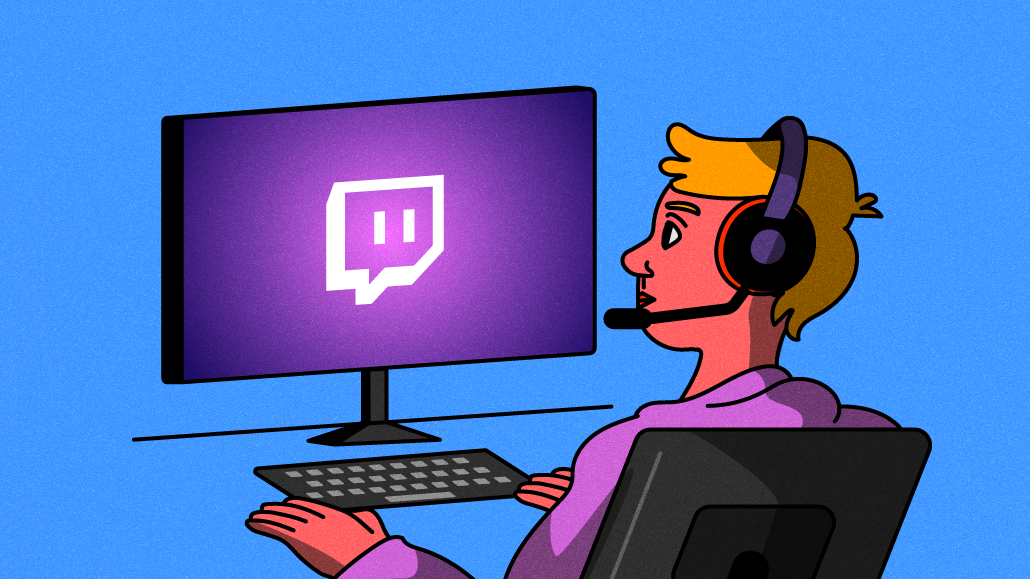
As platforms increasingly compete for livestreaming creators and their audiences, Twitch’s discovery issues remain a sticking point for some streamers.
It’s been just over a year since Twitch launched its Discovery Feed in April 2024. The feed, a TikTok-style endless scroll of vertical video clips and current livestreams, was Twitch’s first product explicitly intended to help viewers discover new streamers without having to leave the platform.
Twitch claims the new feed has had a measurable impact on discovery and user growth, with more than half of new viewer video views now coming through the feed and roughly 38 million new creator follows being driven through Discovery-Feed-related video playback, according to Twitch chief monetization officer Mike Minton.
“Nearly everybody that’s a potential Twitch viewer has been on Twitch at one point or another — we’ve been very visited over the years,” Minton said. “The key is getting people into communities they want to be part of.”
However, three creators told Digiday they have not experienced any growth or new viewers from the Discovery Feed, and that they continue to view Twitch’s relatively weak discovery tools as a major drawback compared to platforms like TikTok and YouTube, where algorithm-driven feeds help surface content to new audiences.
For years, when creators such as Shaun Bolen asked their Twitch partner managers how to grow their channels, the managers advised them to promote their content on other platforms — an indication to Bolen that audience growth was not a focus for Twitch. A year after the launch of Twitch’s Discovery Feed, it remains standard practice for Twitch streamers to promote their streams on other platforms such as X and Discord, he said.
“With all due respect to new creators, Twitch is and should only be considered a home base,” Bolen said. “Your channel will not grow. Whether you’ve been featured on the front page for a year straight (as I have), whether you make the biggest, most flamboyant content ever (as I have) — if that content is not blowing up on YouTube or TikTok, or you haven’t become famous by being MAGA slime or an alt-right grifter, you will not grow on Twitch.”
Before the rise of competitors such as Kick and YouTube, Twitch was the only major platform for livestreaming creators. Anyone who wanted to make a living from streaming flocked to Twitch. But as competitors like Kick continue to gain ground against Twitch within the streaming community, Twitch is implementing more changes to keep smaller streamers within the fold, including updates to its moderation practices, the expansion of Twitch’s monetization options and last year’s Discovery Feed launch.
TikTok creator Dan “B-Sides Live” Baxter, for example, is currently exploring alternative streaming platforms due to concerns over the potential for a TikTok ban in the U.S. Although Baxter has successfully moved most of his roughly 200 paying subscribers over from TikTok to Twitch, he said that he has had trouble building his Twitch audience beyond that loyal following so far. On TikTok, Baxter’s livestreams peaked at 80,000 monthly views last month, and he boasts over 50,000 followers; on Twitch, his following currently stands at 251.
Creators say the Discovery Feed hasn’t helped because it doesn’t align with how most of them actually use Twitch. Since the Discovery Feed highlights vertical video clips, creators feel incentivized to edit and post vertical video to show up on the feed — but until Twitch rolled out a new vertical video clip editor option last year, horizontal video was the default format for clips, meaning creators and their fans have had to switch to the newer, less familiar vertical tools to make it onto the Discovery Feed, even if they prefer the older horizontal clipping system.
“For newer users, they already have TikTok/YT Shorts/IG Reels, so why would they ever want to watch poorly formatted vertical clips or boxed horizontal clips through Twitch when their current apps do it better?” said Gappy, a Twitch streamer who asked to keep his real name private.
Minton acknowledged creators’ concerns over the horizontal/vertical video split, but said that Twitch believes vertical video is better suited to a rapid-fire video scrolling experience. He told Digiday that Twitch plans to implement vertical live video in “probably a couple months,” to help make the process of creating vertical video clips more seamless for creators and their fans.
“We recognize one of the biggest impediments to a really good feed experience is that most of our video is horizontal 16:9 [ratio],” he said.
More in Media

Publishers are hunting for AI prompt data — now they’re starting to get it from third-party companies
Publishers are finally gaining some visibility into AI search, as new prompt data tools crack open a black box.

Digiday+ Research: Publishers’ growing focus on video doesn’t translate to social platforms
Major publishers have made recent investments in vertical video, but that shift is not carrying over to social media platforms.

Technology x humanity: A conversation with Dayforce’s Amy Capellanti-Wolf
Capellanti-Wolf shared insight on everything from navigating AI adoption and combating burnout to rethinking talent strategies.








